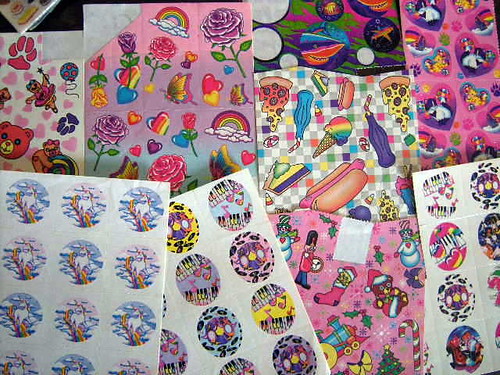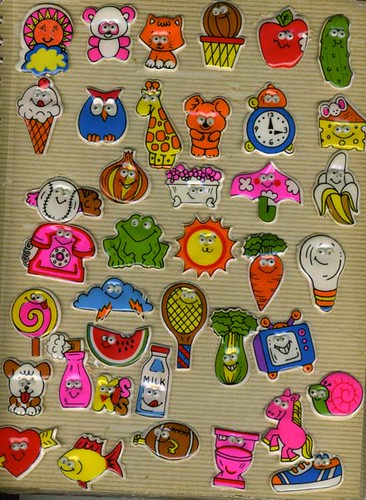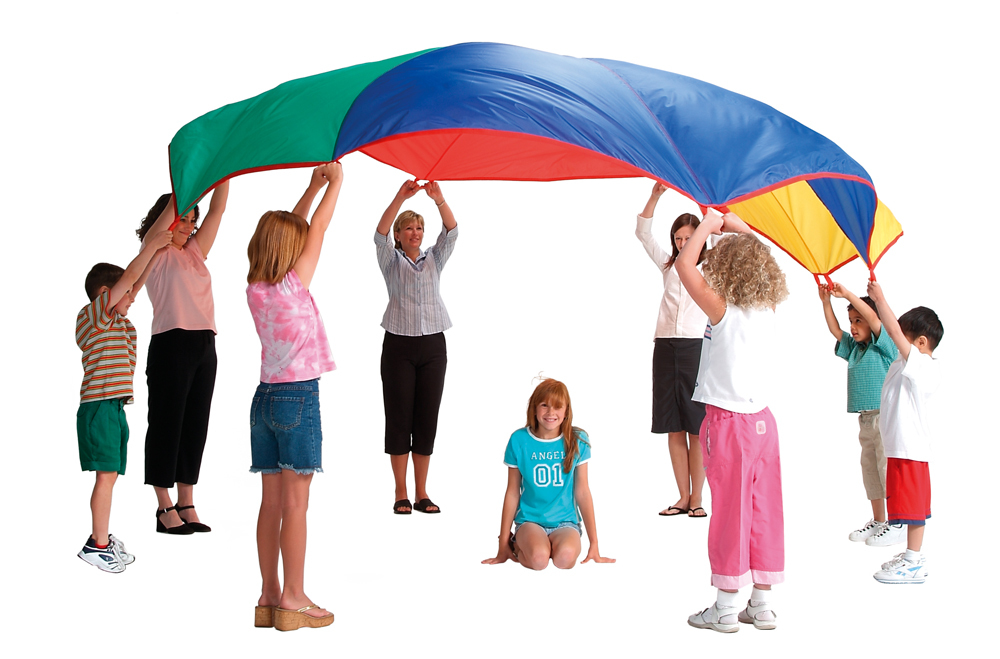Note: Sorry for the sporadic posts as of late, I've been in the process of moving and have had limited time for reminiscing. Fresh material is on the way, it might just pop up a little more slowly. Check back often for new posts!

In the 80s and 90s, no single possession could rocket a child to the top of the elementary school social stratosphere quite like a thoughtful, well-balanced sticker collection. Whether kept on their original backings or stuck carefully within the pages of an attractive sticker book, these collections were some of the most coveted items one could own during our grade school years. A new sticker afforded its owner not only the thrill of a new belonging but also recess bragging rights to the latest in sticker trends and technology. An image of two kittens playfully wrapped up in a high top sneaker or a three dimensional googly eyed dinosaur was usually more than enough to earn you a spot at the cool table in the cafeteria.
If ever there was anything to which to trace the overabundance of perfectionism and type A behavior amongst children of the 90s, sticker collections have got to be one of the major culprits. Like other forms of collecting, forming sticker collections required patience, self-restraint, and the ability to enjoy something that both serves no use.
In order to maintain the pristine condition of our most prized stickers, it was critical to not touch or handle your collection too roughly; in short, it was necessary to treat them llike a signed first edition being brought to appraisal on Antiques Roadshow. Doing anything to compromise the alleged inherent value of the following items was the equivalent of social sticker suicide.
Lisa Frank
 Lisa Frank were among the most coveted designs in school supplies during the 80s and 90s, so it’s no surprise her stickers were considered fairly high-end in the classroom trading market. The bright colors, whimsical designs, and schmaltzy characters turned Lisa Frank stickers into virtual currency for elementary school girls. Innumerable hours were lost to swooning over the cuteness of a panda wielding a paint-laden brush or unicorn leaping majestically across a rainbow. For the record, the current Lisa Frank designs are generally considered to be subpar and inferior to our colorful cuddly originals.
Lisa Frank were among the most coveted designs in school supplies during the 80s and 90s, so it’s no surprise her stickers were considered fairly high-end in the classroom trading market. The bright colors, whimsical designs, and schmaltzy characters turned Lisa Frank stickers into virtual currency for elementary school girls. Innumerable hours were lost to swooning over the cuteness of a panda wielding a paint-laden brush or unicorn leaping majestically across a rainbow. For the record, the current Lisa Frank designs are generally considered to be subpar and inferior to our colorful cuddly originals.Scratch n' Sniff
 I’ve been told technology yields progress, and I can imagine no greater example than the leap from ordinary, smell-free stickers to the odoriferous sensory explosion of a scented sticker. The patented technology gave us a simple two-step process to nasal bliss, executed as follows:
I’ve been told technology yields progress, and I can imagine no greater example than the leap from ordinary, smell-free stickers to the odoriferous sensory explosion of a scented sticker. The patented technology gave us a simple two-step process to nasal bliss, executed as follows:1. Scratch
2. Sniff
It was that simple. You saw a strawberry, you scratched a strawberry, you smelled a strawberry. Sticker technology at its most useful.
Fuzzy
 Textured stickers were also a popular addition to any collection, though their fuzziness often made it difficult to keep them in their original condition. Repeated rubbing wore down the fuzz, leaving us with bald puppies and hairless kittens. Tough break.
Textured stickers were also a popular addition to any collection, though their fuzziness often made it difficult to keep them in their original condition. Repeated rubbing wore down the fuzz, leaving us with bald puppies and hairless kittens. Tough break.Puffy/Googly Eyes
 Also a major contender in the textured category were the puffy and/or googly eyed stickers, giving us a decidedly creepy three dimensional experience that would not stop staring. I don’t care how functional it may seem to infuse a triceratops image with its very own googling eyeballs--no one wants that much shaky eye contact with a prehistoric sticker.
Also a major contender in the textured category were the puffy and/or googly eyed stickers, giving us a decidedly creepy three dimensional experience that would not stop staring. I don’t care how functional it may seem to infuse a triceratops image with its very own googling eyeballs--no one wants that much shaky eye contact with a prehistoric sticker.Holograms
 It’s a scientifically proven fact that children love shiny things and the existence of multiple dimensions, so it’s a no-brainer that we all went crazy over a shimmery combination of the two. These mysteriously three-dimensional holographic stickers sold in science museum stores and other such vaguely educational shops, ensuring that each trip there with our parents would inevitably end with an ear-plugging, breath holding, foot-stomping tantrum over these stickers.
It’s a scientifically proven fact that children love shiny things and the existence of multiple dimensions, so it’s a no-brainer that we all went crazy over a shimmery combination of the two. These mysteriously three-dimensional holographic stickers sold in science museum stores and other such vaguely educational shops, ensuring that each trip there with our parents would inevitably end with an ear-plugging, breath holding, foot-stomping tantrum over these stickers.Mrs. Grossman's
 Andrea Grossman’s infinite wisdom and business savvy saw fit to sell her rolls of stickers by the yard, hence exponentially expanding their welcome additions to any child’s sticker collection in a single shopping trip. Featuring designs like cleverly posed animals and background scenery elements, Mrs. Grossman’s stickers could be arranged into scenes complete with storylines and characters. Posable stickers made for exciting Storybook Weaver-esque sticker book pages, shaping turtles, picnic baskets, and other assorted items into a coherent scene.
Andrea Grossman’s infinite wisdom and business savvy saw fit to sell her rolls of stickers by the yard, hence exponentially expanding their welcome additions to any child’s sticker collection in a single shopping trip. Featuring designs like cleverly posed animals and background scenery elements, Mrs. Grossman’s stickers could be arranged into scenes complete with storylines and characters. Posable stickers made for exciting Storybook Weaver-esque sticker book pages, shaping turtles, picnic baskets, and other assorted items into a coherent scene.Sandylion
 Fuzzy koala bears and sparkly rainbow fish? Where do I sign up? Glitter or texture made Sandylion an attractive addition to any well-rounded collection. With the right combination of shimmery dolphins and fuzzy ghosts, you could easily corner the market of your local underground sticker trade.
Fuzzy koala bears and sparkly rainbow fish? Where do I sign up? Glitter or texture made Sandylion an attractive addition to any well-rounded collection. With the right combination of shimmery dolphins and fuzzy ghosts, you could easily corner the market of your local underground sticker trade.Sticker Books/Boxes
 Of course, the most important element in any worthwhile sticker collection was a specially created (re: unnecessarily expensive) book or receptacle by which to transport it. After all, what good is a sticker collection if you can’t carry it around and show it off? You could choose to stick yours in a book with special non-stick pages or cut each sticker individually with its backing to ensure easy trading.
Of course, the most important element in any worthwhile sticker collection was a specially created (re: unnecessarily expensive) book or receptacle by which to transport it. After all, what good is a sticker collection if you can’t carry it around and show it off? You could choose to stick yours in a book with special non-stick pages or cut each sticker individually with its backing to ensure easy trading. That said, actual sticking of the stickers onto surfaces such as notebooks and Trapper Keepers was generally frowned upon. Such behavior was the equivalent of supergluing a dollar bill to the front of your Yikes pencil case. Stickers were veritable elementary school currency, so improper usage was akin to destruction of of US-minted money--it may not have been illegal, but it certainly wasn’t acceptable usage.












